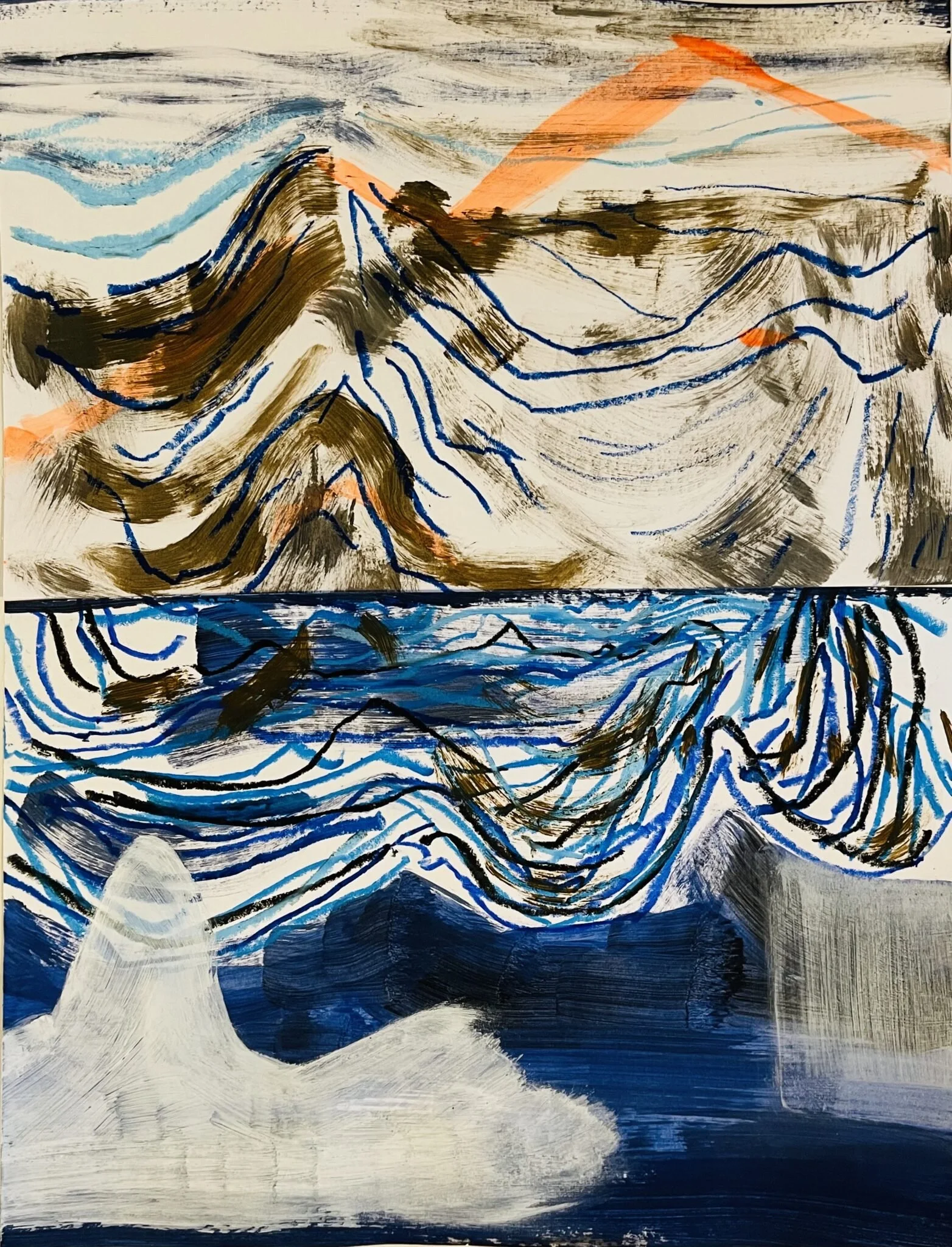Cover Image Flockhart K, Voice Final Piece (2025)
Reviewing your own work can be very difficult, how can you look objectively at your work, when all you can remember is how much you struggled to produce it? How can you gain a different perspective?
In 1985, Edward de Bono published his Six Thinking Hats theory, developed to aid thinking and reflection. De Bono’s idea is that the thinker can imaginatively, or metaphorically, put on one of six coloured hats and in doing so embody a specific attitude of critical thinking. De Bono defines the hats and suggests that each has a specific function and particular thinking trait.
Review your own timeline and define your journey so far using the thinking hat analogy.
WHITE HAT (Neutral & Objective)
Each given project has a balance of technical requirements and creative thinking. I have aimed to for fill the technical outcomes of each exercise in order to improve my skills, especially in areas I don’t feel comfortable. And also find my voice within each piece and make it my own.
That prevented the exercises becoming too prescriptive.
When I felt lost I used artists research to find connections that could motivate me.
RED HAT (Emotions)
The greatest sense of achievement has come from fully immersing myself in the process of each exercise. And that has also been the most draining aspect too.
It is an endurance test going so deeply into the ideas, but this is also necessary to evolve. I have discovered that each piece, wether small or large, should make you feel very different at the end, than when you first began. Something shifts on your trajectory.
BLACK HAT (Caution & Weakness)
Time management is the weakest link. I believe that in order to create something of substance, if only by my own standards, ideas need time to germinate, peak, rest, and then reach final manifestation. It is difficult to predict. It is linked to ‘frustration’ which is an essential part of the creative process. No matter how much preparation takes place, at some point the work shape shifts and a wrestle commences as to which ideas and techniques are going to emerge and thrive.
I used to see this as the idea failing, and would usually abandon the work at this stage, but now I recognise it as the point the work breaks through and comes to life.
YELLOW HAT (Positivity & Optimism)
I was surprised how much inspiration I obtained from conceptual art. I had become quite fixed in the art I liked and and looked at. Being encouraged to use alternative materials and analyse the ideas behind such work really extended my use of materials and gave me confidence to explore ideas I never felt I could bring to fruition.
Activation. That has become a positive catalyst to generate work. Some work can feel dormant until placed with other pieces and then they activate each other. Creating new opportunities, for those actual pieces or further work.
GREEN HAT (Creativity & Growth)
My love for paint has deepened. And that is still the area that I become submerged in.
Each alternative evolution had added confidence or agency to my painting. And that is the area that I instantly gravitate to pursuing more and more. I see a lot of wakened potential in the use of mark making and drawn line in my painting now. Which before I only expressed in one way. And now I have discovered mixed mediums and techniques that deviate from the traditional way of painting, it has channeled new outcomes to my paintings.
I would like to work on bringing in more drawing into my paintings, in final pieces and studies, whether in a studio setting or on location.
BLUE HAT (Control & Organisation)
I have too many ideas, and that is paralysing. I find it hard to focus and commit to one way of working.
I think I might benefit from creating a longterm aim to settle into an intention and see how connected I can become to that body of work.
I hope that when reviewing this exercise I can see 1 – 3 clear possibilities.
DRAWING HAT
Drawing has been the undercurrent to every exercise I have undertaken. Before the course I had a secure method of working. But I had plateaued and painted with fear. Afraid of mistakes and frustrations.
The course has proven to me that the longevity is in not focusing on singular aspects going well, but experimenting and meeting the ideas and myself where they are in that present moment. That there is a natural ebb and flow to the energy created.
Drawing has existed in my work as the essence of each idea, the bones of them. Amy Sillman expressed a phrase that has stayed with me throughout the course, that paintings are a construction site.
Drawing to me is the construction, mentally and practically that builds the art and allows what ever medium you are working in to thrive and and flourish.
KEY PHRASES FROM THE OUTCOME
Feel different at the end of a piece. Something has shifted.
Time management.
Germinate / Peak / Rest / Manifest.
Frustration phase. The wrestle. Have to immerse here.
Activate. Some pieces activate others.
Exploration. Art / Artists / Ideas.
Marking making. Introducing line work.
Mixed mediums / Alternative ways of using materials.
Collaging for future work.
Working in the studio / Working on location.
Longterm intensions.
Meet the work where it is.
Ebb & Flow.
Fig.6 Flockhart K, Hijack (2024)
List of images
Cover Image Flockhart, K. (2025) Voice Final Piece. [Mixed media] In possession of: The author: Volleges.
Fig.1 Flockhart, K. (2024) Hijack. [Mixed media, photo edited with Hipstamatic] In possession of: The author: Volleges.

